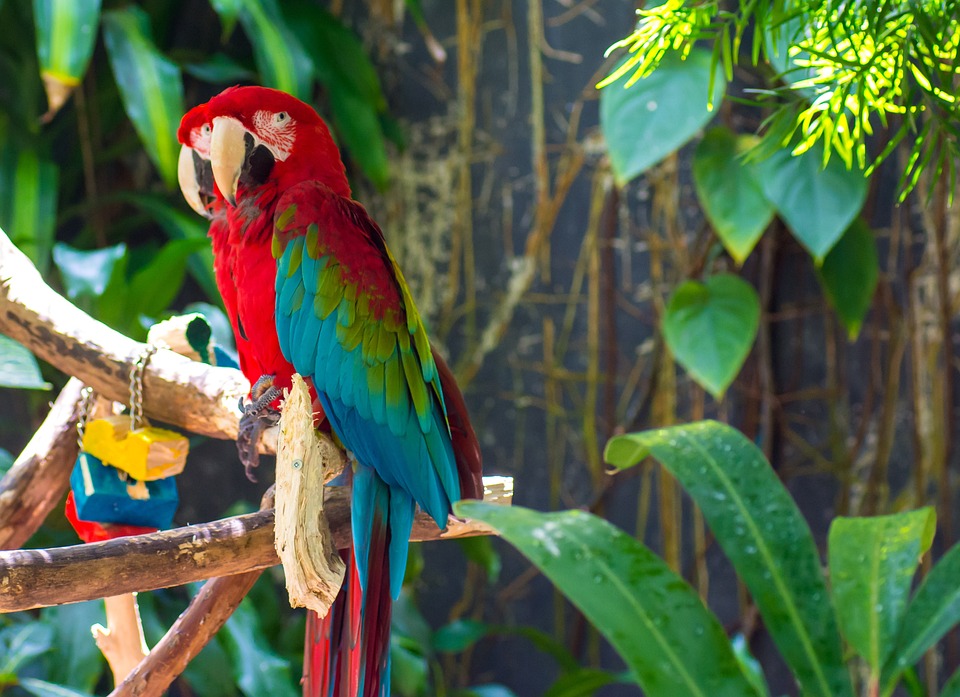Parrots are fascinating creatures that require mental stimulation and environmental enrichment to thrive. One of the most effective ways to provide such enrichment is through the use of foraging boxes. These boxes tap into a parrot’s natural instincts and offer a captivating and rewarding experience. In this article, we will explore the world of parrot behavior and delve into the benefits, tips, and FAQs related to foraging boxes.
Understanding Parrot Behavior
Parrots are highly intelligent animals that require mental stimulation to keep their minds active and engaged. Without proper mental stimulation, parrots can become bored, stressed, and may develop behavioral issues. Foraging boxes help address this need by providing an outlet for their natural foraging instincts.
In the wild, parrots spend a significant amount of time foraging for food. This behavior is not only essential for their survival but also provides mental stimulation. Implementing foraging boxes mimics this natural behavior, allowing parrots to engage in mentally stimulating activities.
The Impact of Enrichment on Parrot Behavior
Enrichment plays a crucial role in a parrot’s overall well-being. It helps prevent boredom, reduces stress, and encourages natural behaviors. By providing parrots with stimulating environments, we can help prevent the development of destructive behaviors such as excessive screaming, feather plucking, and aggression.
Introducing Foraging Boxes
Foraging boxes are specially designed containers that allow parrots to engage in the mentally stimulating activity of searching for food. These boxes can be made at home using various materials or purchased commercially from pet stores. When choosing a foraging box, it is essential to consider the size and type of materials that are safe for your parrot to interact with.
Benefits of Foraging Boxes
Foraging boxes offer several benefits for parrots:
1. Physical exercise and mental stimulation: The process of searching for food in a foraging box provides both physical exercise and mental stimulation for parrots. This helps keep them physically fit and mentally engaged.
2. Encouraging natural behaviors: Foraging is an innate behavior for parrots. By providing them with foraging boxes, we allow them to engage in this natural behavior, which helps fulfill their instincts and promotes overall well-being.
3. Reducing boredom and destructive behavior: Boredom can lead to destructive behavior in parrots. By providing them with foraging boxes, we keep them mentally stimulated, reducing the likelihood of destructive behaviors such as excessive chewing or feather plucking.
Tips for Implementing Foraging Boxes
To ensure a successful foraging experience for your parrot, consider the following tips:
1. Gradual introduction and training: Introduce the foraging box gradually to allow your parrot to become familiar with it. Provide positive reinforcement and rewards when they interact with the box.
2. Choosing appropriate materials and treats: Use materials that are safe for your parrot to interact with, such as untreated wood or food-safe plastic. Choose treats that are healthy and suitable for your parrot’s dietary needs.
3. Rotating and varying the foraging experience: Change the materials and treats inside the foraging box regularly to keep the experience engaging and prevent boredom.
Frequently Asked Questions (FAQs)
Q1: Are foraging boxes suitable for all parrot species?
A1: Foraging boxes can be beneficial for most parrot species. However, it is essential to consider the size and type of materials that are safe for your specific parrot.
Q2: How often should I provide my parrot with a foraging box?
A2: It is recommended to provide your parrot with a foraging box on a daily basis to keep them mentally stimulated. However, the frequency can vary depending on your parrot’s individual needs and preferences.
Q3: Can foraging boxes be used as a replacement for social interaction?
A3: While foraging boxes provide mental stimulation, they should not be used as a replacement for social interaction. Parrots are highly social animals and require regular interaction with their human caregivers.
Q4: What are some signs that my parrot is enjoying the foraging box?
A4: Signs that your parrot is enjoying the foraging box include actively searching for treats, engaging with the materials inside the box, and vocalizing with excitement.
Q5: How can I encourage my parrot to start using the foraging box?
A5: Gradual introduction, positive reinforcement, and patience are key when encouraging your parrot to start using the foraging box. Start by placing treats near the box and gradually move them inside, rewarding your parrot whenever they interact with the box.
Conclusion
Foraging boxes offer a captivating and rewarding experience for parrots by tapping into their natural instincts and providing them with a stimulating environment. By incorporating these enrichment tools into your parrot’s daily routine, you can promote mental well-being, reduce boredom-related issues, and enhance their overall quality of life. Remember to choose the right foraging box for your parrot, introduce it gradually, and provide a variety of materials and treats to keep the experience engaging. Your parrot will thank you with their cheerful chirps and vibrant plumage!









